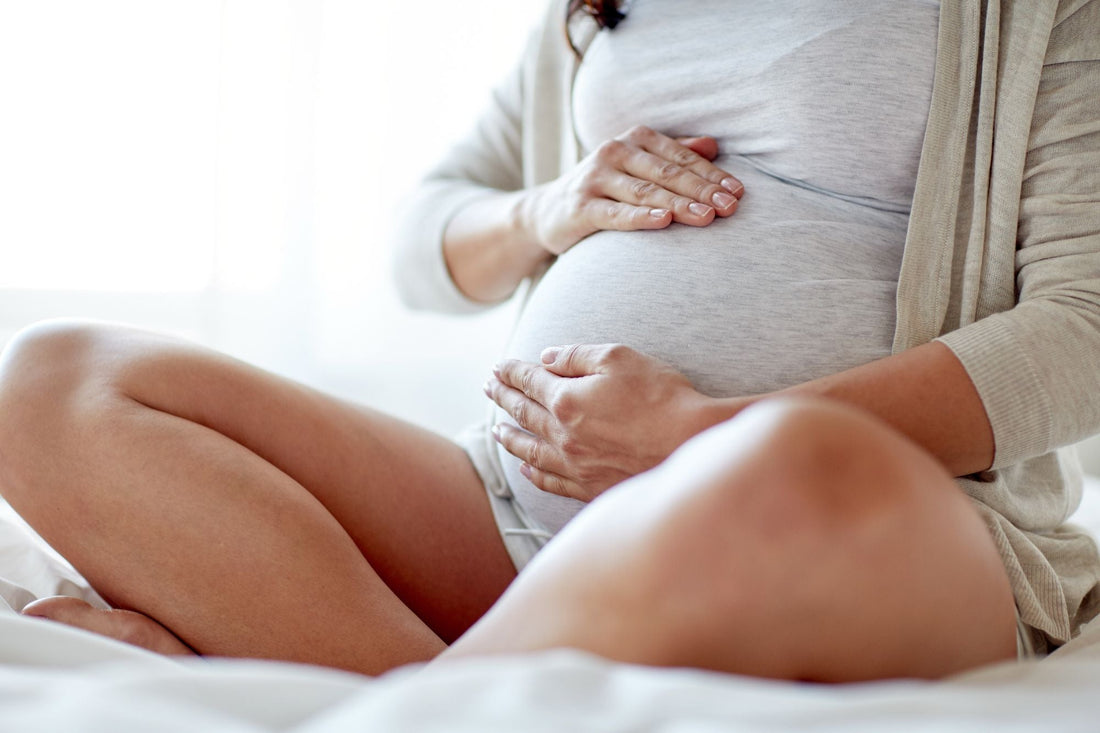
Are POTS Symptoms Worse During Pregnancy?
Many women with Postural Orthostatic Tachycardia Syndrome wonder how POTS and pregnancy will affect their daily lives. While some experience POTS pregnancy improvement, others face significant POTS pregnancy challenges.
The reality? Every woman’s experience is different, and understanding these variations can help you better prepare for your pregnancy journey. Managing POTS during pregnancy requires understanding, preparation, and support.
Essential Takeaways:
- Understanding Pregnancy and POTS Symptoms: Some women experience relief from POTS symptoms during pregnancy due to increased blood volume, while others may notice intensified symptoms like dizziness or fatigue, particularly during later trimesters. Everyone is different, so there’s no way to predict how pregnancy with POTS might affect you.
- Working with Healthcare Providers is Key: Managing POTS during pregnancy requires close collaboration with healthcare providers. Regular check-ins can help you adjust treatments, monitor symptoms, and ensure safe strategies are in place to support both you and your baby throughout pregnancy and postpartum.
This guide will explore both scenarios, offer real patient examples, and give practical tips to help women with POTS manage their symptoms effectively throughout pregnancy.
- How Pregnancy Affects POTS Symptoms
- Why Some Women Experience Symptom Improvement
- Managing POTS Symptoms During Pregnancy
- Challenges of Managing POTS Symptoms in the Third Trimester
- POTS Medication and Treatment Options During Pregnancy
- POTS and the Postpartum Period: What to Expect After Delivery
- Taking Control of POTS During Your Pregnancy
How Pregnancy Affects POTS Symptoms
Pregnancy causes significant changes in the cardiovascular and nervous systems—the same systems already affected by POTS. During pregnancy, your blood volume increases by 30-50%, and your heart rate works harder to support both you and your growing baby.¹
Common Cardiovascular Changes
For some women with POTS, these changes bring unexpected benefits, while others face new challenges. Cardiovascular changes during pregnancy include:
- Increased blood volume
- Higher cardiac output
- Lower blood pressure (especially in the second trimester)
- Changes in blood vessel dilation¹
These natural adaptations can greatly impact your POTS symptoms, sometimes in surprising ways. Let’s take a look at how you might be affected.
Why Some Women Experience Symptom Improvement
Many women find their POTS symptoms actually improve during pregnancy, particularly during the second trimester. This improvement is often caused by:
- Increased Blood Volume: The natural increase in blood volume can help combat the blood pooling issues common in POTS.
- Fluid Retention: Higher fluid levels may help improve blood pressure.
- Hormonal Changes: Pregnancy hormones can affect blood vessel function in ways that benefit some POTS patients.
Studies show that 60-68% of pregnant women with POTS experience stable or improved symptoms. The second trimester often brings the most relief, with many patients reporting significant improvements in their usual POTS symptoms.
This POTS pregnancy improvement is particularly noticeable in women who had mild to moderate symptoms before pregnancy. For example, one study following multiple pregnancies found that over half of the women reported feeling better during pregnancy than before, especially during their second trimester when blood volume reaches its peak.¹

Managing POTS Symptoms During Pregnancy
Whether you experience improvement or challenges, these POTS management strategies can help.
Staying Hydrated
Increased fluids help manage blood volume. Drink 10-15 cups (84-118 ounces) of water daily with a squeeze of electrolytes for optimal hydration.¹
Boosting Salt Intake
Adding high-quality sea salt to your food and drinks can help you maintain fluid balance and blood pressure. Consult with your healthcare provider to determine appropriate salt levels during pregnancy, and monitor your blood pressure regularly.¹
Wearing Compression Garments
Wear pregnancy-safe compression socks and full-length compression wear to aid circulation and reduce dizziness. Adjust compression levels as your pregnancy progresses.
Practice Safe Movement
Safe movement becomes increasingly important during pregnancy as your body changes and adapts to your growing baby. Make slow, deliberate position changes throughout the day, following these tips:
- Upon waking, sit up slowly and dangle your feet over the side of your bed. Wait for 1-2 minutes, then gradually stand up. This “head up” method helps your body adjust and reduces dizziness.
- Avoid standing still for extended periods, and build in regular movement breaks every 15-20 minutes when you’re active. Using a chair or stool during typically standing activities like cooking or showering can help prevent symptom flares.
- Consider recumbent exercises like swimming or using a recumbent bike, which allow you to stay active while minimizing orthostatic stress.¹ Learn more about POTS-friendly activities in our guide to Exercise and Physical Therapy with POTS.
Always consult your healthcare provider before starting any new POTS management strategies, especially during pregnancy. They can help you create a personalized plan that takes into account both your POTS symptoms and your pregnancy needs.
Challenges of Managing POTS Symptoms in the Third Trimester
While some women experience improvement of their POTS symptoms during pregnancy, others face significant POTS pregnancy challenges. The third trimester especially can present unique challenges for women with POTS.
Common pregnancy and POTS symptoms that may need management include:
- Increased Pressure: The growing baby can compress blood vessels.
- Higher Fluid Requirements: Your body needs even more hydration.
- Limited Positioning Options: Finding comfortable positions becomes harder.¹
These physical changes can make managing your POTS symptoms more challenging, but with proper planning and support, you can navigate this final stage of pregnancy successfully.
Managing Third Trimester Challenges
Here are ways to handle the unique demands of your third trimester:
- Use pregnancy pillows for better positioning.
- Take frequent rest breaks.
- Consider modified bed rest if recommended by your healthcare provider.¹
Remember to stay in close communication with your healthcare team as you approach delivery. They can help you adjust your management strategies as your body’s needs continue to change.

POTS Medication and Treatment Options During Pregnancy
Managing medications during pregnancy requires careful consideration to ensure both your well-being and your baby’s safety. Your healthcare team will work with you to create a treatment plan that balances your POTS symptoms with pregnancy safety guidelines.
POTS medications generally considered safe during pregnancy include:
- Beta-blockers (specific types)
- Certain forms of fludrocortisone
- IV saline treatments when necessary
However, you should always consult your healthcare provider before taking medications or supplements, especially during pregnancy. The FDA hasn’t approved any medications specifically for POTS treatment, but healthcare providers may prescribe certain medications off-label to help manage symptoms.
You may also want to discuss the following medicines with your doctor:
- Midodrine
- SSRIs
- Other POTS medications
Your doctor may need to adjust dosages or recommend alternative treatments as your pregnancy progresses. Regular monitoring helps ensure your POTS symptoms remain stable while keeping you and your baby safe.¹ ²
Learn more about POTS meds in our guide to Mastering Medications for POTS.
POTS and the Postpartum Period: What to Expect After Delivery
Hormonal shifts and potential blood loss can trigger a resurgence of POTS symptoms after childbirth. A postpartum care plan that includes hydration, gradual activity, and close monitoring by a healthcare provider can help you navigate this period successfully.³
Preparing for Postpartum
Planning ahead for the postpartum period is crucial, as postpartum POTS symptoms can have serious implications for both mother and baby. Here’s how to get ready:
- Arrange extra support for the first few weeks.
- Keep hydration supplies and salt easily accessible.
- Set up your recovery space to minimize unnecessary standing.
- Have compression garments ready for when you’re cleared to wear them.
- Consider working with your doctor on medication adjustments if needed.³
Remember that recovery takes time. Work closely with your healthcare team to adjust your POTS management strategies as your body heals and adapts to its new normal.
Taking Control of POTS During Your Pregnancy
Pregnancy with POTS can be challenging, but with attentive care and symptom management, many women navigate it successfully. Stay connected with your healthcare providers and remember that each pregnancy experience is unique.
Get More Expert POTS Tips
Want to learn more about managing POTS? Explore our POTS Resources today. With patience and proactive care, you can create a positive pregnancy journey for you and your baby.

References:
- Morgan, K., Smith, A. & Blitshteyn, S. (2022). POTS and Pregnancy: A Review of Literature and Recommendations for Evaluation and Treatment. International Journal of Women’s Health, 14, 1831–1847. Retrieved from https://pmc.ncbi.nlm.nih.gov/articles/PMC9795856/
- Cleveland Clinic. (2022). Postural Orthostatic Tachycardia Syndrome (POTS). Retrieved from https://my.clevelandclinic.org/health/diseases/16560-postural-orthostatic-tachycardia-syndrome-pots
- Kanjwal, K., Karabin, B., Kanjwal, Y. & Grubb, B. P. (2009). Postpartum Postural Orthostatic Tachycardia Syndrome in a Patient with the Joint Hypermobility Syndrome. Cardiology Research and Practice, 2009, 187543. Retrieved from https://pmc.ncbi.nlm.nih.gov/articles/PMC2778448/





